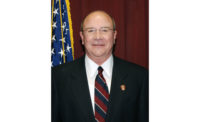The Environmental Protection Agency and Army Corps of Engineers have issued a new final rule that they say will clear up the muddy definition of which rivers, streams, wetlands and other bodies of water are subject to federal regulation and which are not.
The regulation, which the agencies announced on May 27, is important to construction firms, which need to obtain a Corps permit to build in and around federally regulated waters.
It has become one of the Obama administration's most closely watched regulations and drawn praise from environmental organizations and their congressional allies and fierce attacks from its critics in industry and on Capitol Hill.
President Obama said in a statement, “This rule will provide the clarity and certainty businesses and industry need about which waters are protected by the Clean Water Act and it will ensure polluters who knowingly threaten our waters can be held accountable.”
House Speaker John Boehner (R-Ohio) slammed the agencies’ action as “a raw and tyrannical power grab that will crush jobs.”
The regulation, which redefines which water bodies are "Waters of the United States" under the Clean Water Act, will take effect 60 days after it is published in the Federal Register. Opponents are likely to continue to fight in Congress, and also in courts, to block or kill the rule in Congress, in the courts or both.
As the regulation made its way through the agencies' reviews and drafting, construction groups and congressional critics blasted it, contending that the agencies overreached.
That criticism continued for the final version. National Association of Home Builders Chairman Tom Woods said in a statement that the regulation “will needlessly raise housing costs and add more regulatory burdens to landowners and industries that rely on a functioning permitting process to spur job and economic growth.”
The U.S. Supreme Court attempted to define Waters of The U.S. in two decisions in 2001 and 2006 but many have said the justices left that definition unclear.
Woods predicted that the regulation “will soon wind up in the courts yet again.”
Opponents also have turned to Congress for help in blocking the long-awaited water rule and found receptive ears.
The House on May 12 approved a bill introduced by Transportation and Infrastructure Committee Chairman Bill Shuster (R-Pa.) that would direct EPA and the Corps to scrap the regulation and start over again.
But if such a measure does clear Congress, President Obama is expected to veto the legislation. The House’s 261-155 vote on Shuster’s bill fell short of the two-thirds majority needed to override a veto.
In the Senate, Sen. John Barrasso (R-Wyo.) on April 30 introduced a bill that would require the agencies to revise the rule and spells out which bodies of water should be federally regulated.
Marco Giamberardino, National Association of Electrical Contractors executive director for government affairs, said via email that “the biggest challenge on this—and most other issues pending in the Senate—is getting 60 votes [to avoid a filibuster] and then, of course, [an] unfortunate and certain veto by the President.”
The National Stone, Sand & Gravel Association was pleased to see that EPA and the Corps agreed with their request to exclude quarry and construction pits from federal regulation. But NSSGA President and CEO Michael Johnson said that the agencies “failed to reduce confusion and add clarity when that was the rule’s intended goal.”
Environmental groups welcomed the rule. Rhea Suh, Natural Resources Defense Council president, said that the regulation was overdue and would restore “strong safeguards against pollution.”
Although Boehner and other opponents of the rule contend EPA and the Corps went too far, the agencies said in the regulation's preamble, “The scope of jurisdiction in this rule is narrower than that under the existing regulation.”
One reason, the regulation adds, is that it “puts important qualifiers on some existing categories such as tributaries.” Among other things, tributaries are defined as having "indicators of flow"—a bank, beds and ordinary high-water levels.




Post a comment to this article
Report Abusive Comment